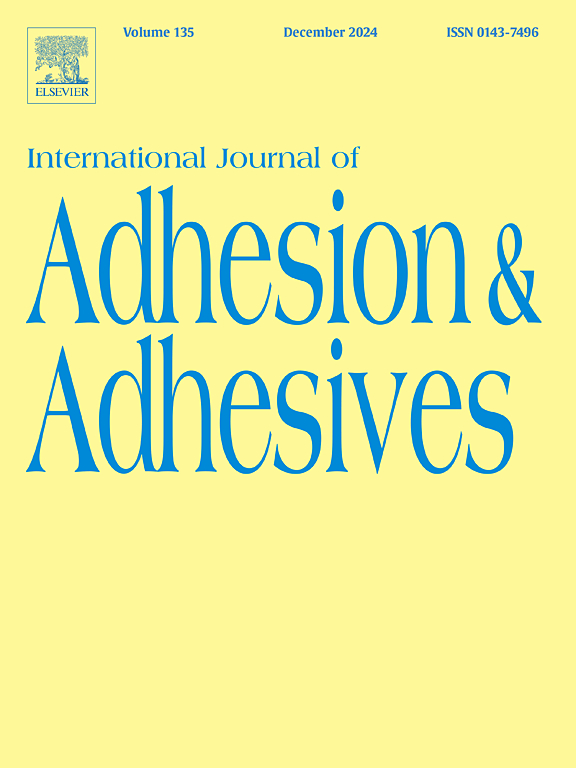The influence of 2,4,6-trimethylbenzoyldiphenylphosphine oxide on the toxicity of dental resins: A systematic review of in vitro studies
IF 3.2
3区 材料科学
Q2 ENGINEERING, CHEMICAL
International Journal of Adhesion and Adhesives
Pub Date : 2024-12-17
DOI:10.1016/j.ijadhadh.2024.103922
引用次数: 0
Abstract
Research question
The 2,4,6-trimethylbenzoyldiphenylphosphine oxide (TPO) has emerged as a prominent photoinitiator in resin-based compositions but its biological safety is questioned. The research question was: Does the presence of TPO in resin-based dental materials influence its cytotoxicity and genotoxicity?
Material and methods
This research followed the Preferred Reporting Items for Systematic Reviews and Meta-Analyses guideline and was registered on the Open Science Framework (osf.io/sthvf). The literature was searched in the Science Direct, PubMed, Embase, Web of Science, Scopus, ProQuest and Google Scholar databases for articles published until July 2024. The inclusion criteria were studies evaluating the cytotoxicity and genotoxicity of TPO. The exclusion criteria were studies that did not evaluate TPO or that did not evaluate its cytotoxicity and genotoxicity in vitro or in vivo.
Results
463 studies were identified, and after removing duplicates and applying the eligibility criteria, 5 were included and assessed qualitatively. Except for one study which presented a moderate risk of bias, the other five presented a low risk of bias. The heterogeneity of the studies' methodology and the results allowed qualitative analysis and discussion.
Conclusions
The main limitation of TPO is its high toxicity, with higher cytotoxic levels than other photoinitiators. Replacing other photosensitive systems for TPO may not offer adequate cost-benefit for biomedical applications.
求助全文
约1分钟内获得全文
求助全文
来源期刊

International Journal of Adhesion and Adhesives
工程技术-材料科学:综合
CiteScore
6.90
自引率
8.80%
发文量
200
审稿时长
8.3 months
期刊介绍:
The International Journal of Adhesion and Adhesives draws together the many aspects of the science and technology of adhesive materials, from fundamental research and development work to industrial applications. Subject areas covered include: interfacial interactions, surface chemistry, methods of testing, accumulation of test data on physical and mechanical properties, environmental effects, new adhesive materials, sealants, design of bonded joints, and manufacturing technology.
 求助内容:
求助内容: 应助结果提醒方式:
应助结果提醒方式:


